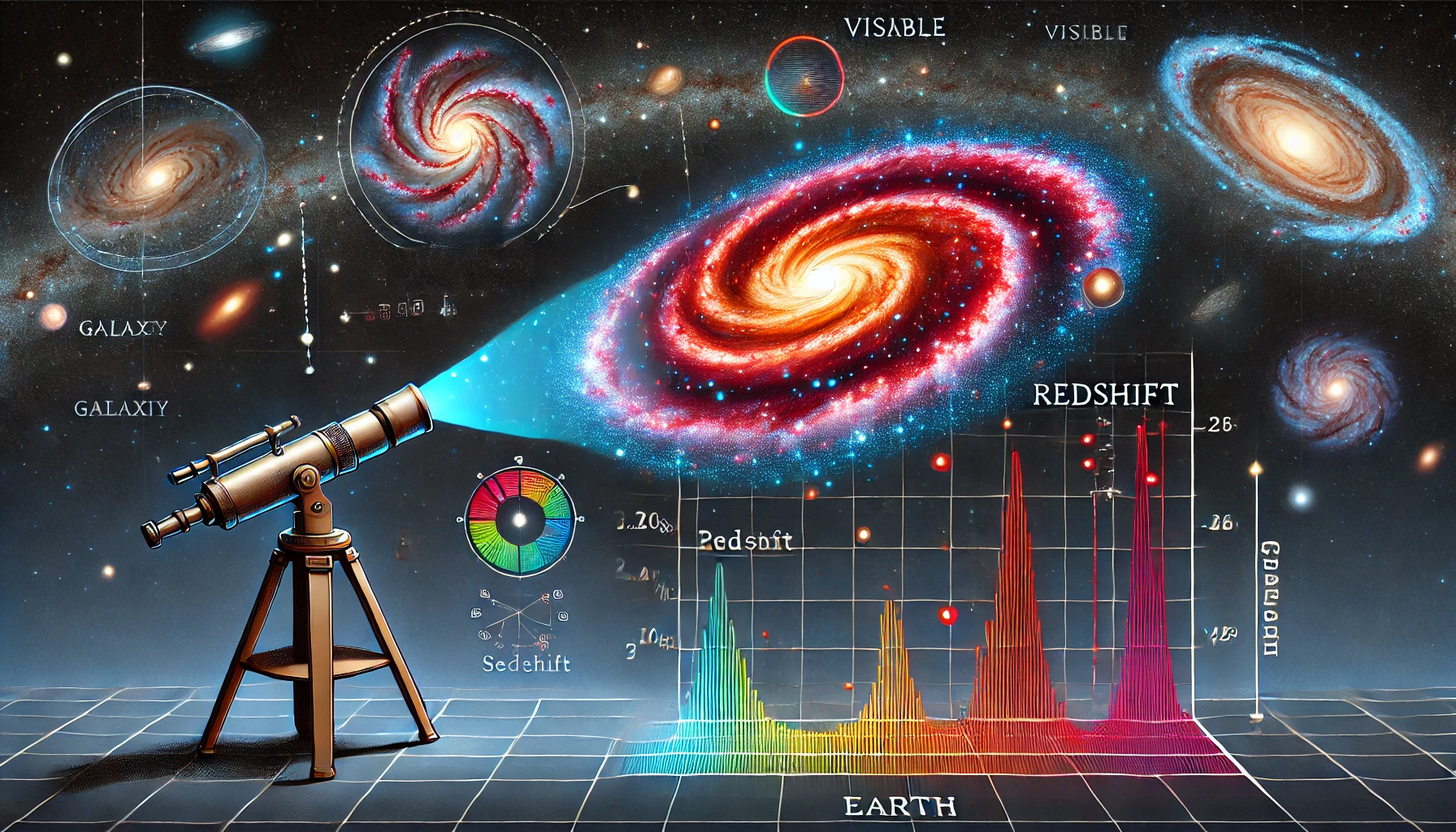The ‘redshift’ phenomenon observed by Slipper in external galaxies is the lengthening of the wavelength of starlight and its shift into the red region, indicating that galaxies are moving away. This was used as evidence that the universe was expanding, and later combined with Hubble’s observations to provide a key scientific foundation for the Big Bang theory.
In the early 20th century, American astronomer Slipper discovered the phenomenon of “redshift” while studying the spectra of starlight from external galaxies. The redshift refers to the redward skew of absorption lines in starlight from external galaxies. Absorption lines are the black lines that appear in the spectrum of starlight. These lines are caused by the absorption of certain wavelengths of starlight by elements in the atmosphere as the light passes through the star’s atmosphere. Therefore, if the absorption lines are the same type, the same elements are present in the star’s atmosphere.
Slipper’s discovery caused a stir in the astronomical community at the time. The early 20th century was an active time for astronomical research, with many astronomers exploring new cosmological phenomena and theories. Slipper’s work played an important role in this process, and his discoveries have shaped the direction of astronomical research ever since. Redshift provided a key clue to understanding the structure of the universe and its changes.
Why does redshift appear in the spectrum of starlight from external galaxies? Within visible light, the spectrum of starlight is colored blue for shorter wavelengths of light and red for longer wavelengths of light, and the wavelengths of light as it travels away become longer. Therefore, as a star moves away from Earth’s observation location, the light from that star becomes longer in wavelength, which causes the absorption lines in the starlight spectrum to shift toward the red side. This is an example of the Doppler effect, and the same principle applies to sound waves. Just as a distant source of sound becomes lower in pitch, a distant source of light becomes redder as its wavelength lengthens.

Slipper’s discovery was evidence that galaxies were moving away from Earth. Hubble then studied 24 galaxies to confirm Slipper’s findings. Based on the fact that the more distant galaxies exhibit a larger redshift, Hubble confirmed that the more distant galaxies were moving away at a faster rate. It also found that all galaxies were moving away from each other, proving that the universe is expanding. This discovery formed the basis of modern cosmology and contributed to our understanding of the expansion of the universe.
The expansion of the universe can also be demonstrated by measuring the distances to stars. Pulsating luminosity is often used to measure distances. Pulsating variable stars are stars whose internal structure is unstable, causing them to expand and contract periodically. As the star expands, it becomes brighter, and as it contracts, it becomes dimmer, causing the brightness of the pulsating variable to increase and decrease periodically.
Cepheid variable stars, a type of pulsating variable star, have a constant proportional relationship between the period of brightness change and the actual brightness. Stars with longer periods of brightness change have brighter true luminosities, and stars with shorter periods have dimmer true luminosities. Therefore, if two Cepheid variable stars have the same period of brightness change, their true luminosities are the same. If two Cepheid variable stars with the same true brightness appear dimmer, that star is farther away from the observer. Since the brightness of light is inversely proportional to the square of the distance to the star, a Cepheid variable that has the same period of brightness change but appears one-fourth dimmer is twice as far away.
Researchers have accumulated a large body of results using these methods to measure distances to stars, and they show that the more distant galaxies are receding faster. The relationship between these distance measurements and redshift allows us to measure the rate of expansion of the universe, which in turn allows us to estimate the age and size of the universe. This process has become an important area of research in modern astronomy and cosmology, and continues to lead to new discoveries and theoretical advances.
Redshift is also considered one of the most important pieces of evidence for the Big Bang theory, as well as the expansion of the universe. According to the Big Bang theory, the universe exploded from a single point about 13.8 billion years ago and has been expanding ever since. The work of Slipper and Hubble provided observational evidence to support this theory and was fundamental to the development of modern astronomy. To this day, many astronomers continue to study the expansion and redshift of the universe in an effort to unlock its secrets.
In addition, recent studies suggest that the rate of expansion is accelerating over time. This is thought to be caused by an unknown source of energy called dark energy, which is opening up a new paradigm in cosmology. Dark energy is estimated to account for about 68% of the energy density of the universe, but its exact nature is still unknown. These studies deepen our understanding of the universe and are expected to lead to many exciting discoveries in the future.
